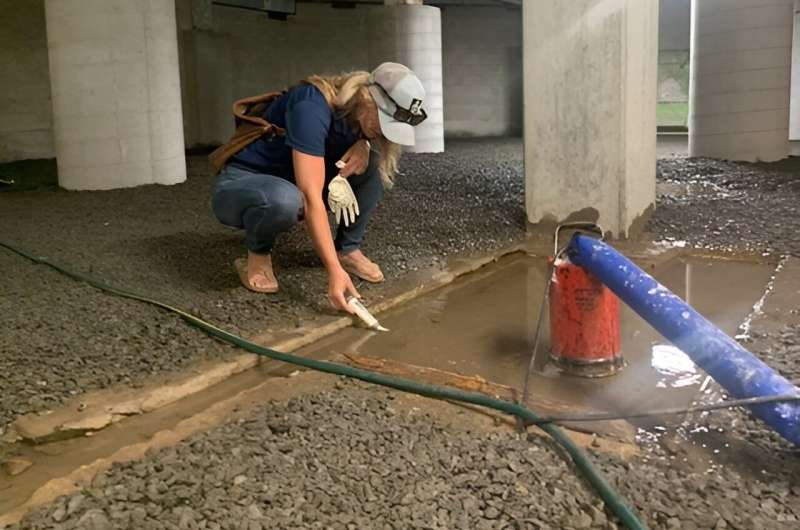Hidden threat: Global underground infrastructure vulnerable to sea-level rise

As sea levels rise, coastal groundwater is lifted closer to the ground surface while also becoming saltier and more corrosive. A recent study by Earth scientists at the University of Hawai’i (UH) at Mānoa has compiled research from experts worldwide showing that in cities where there are complex networks of buried and partially buried infrastructure, interaction with this shallower and saltier groundwater exacerbates corrosion and failure of critical systems such as sewer lines, roadways, and building foundations.
The research is published in the journal Annual Review of Marine Science.
“While it has been recognized that shallowing groundwater will eventually result in chronic flooding as it surfaces, what’s less known is that it can start causing problems decades beforehand as groundwater interacts with buried infrastructure,” said Shellie Habel, lead author and coastal geologist in the School of Ocean and Earth Science and Technology (SOEST) at UH Mānoa. “This knowledge gap often results in coastal groundwater changes being fully overlooked in infrastructure planning.”
The research team aimed to create awareness about these issues and offer guidance from world experts on managing them. Habel and co-authors reviewed existing literature to examine the diverse effects on different types of infrastructure. Additionally, by employing worldwide elevation data and geospatial data that indicate the extent of urban development, they identified 1,546 low-lying coastal cities and towns globally, where around 1.42 billion people live, that are likely experiencing these impacts.
…click on the above link to read the rest of the article…